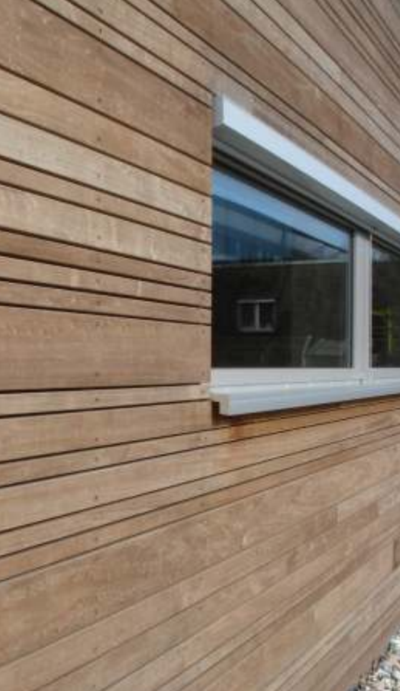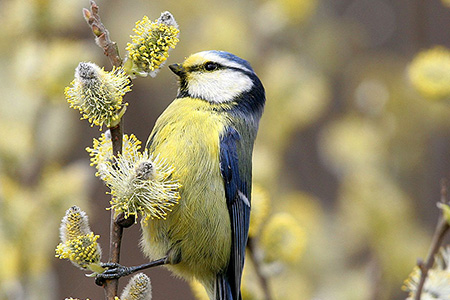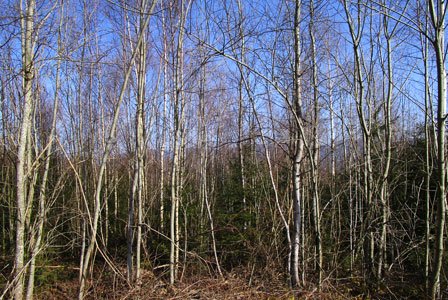Aspen, also known as Eurasian or European aspen or quaking aspen, has been systematically contained in many places for decades. The reason for this is the low price of its wood, coupled with the priority formerly given to valuable wood production in forestry. Traditionally, aspen wood does in fact have various uses. Its use in the construction of half-timbered houses is known from France and northern Germany. It is also highly valued in sauna construction. In addition, aspen wood is used for rotary cut veneer, plywood, packaging, matches, and in cellulose and board production. A more recent application is thermo wood. Controlled heating of the timber to 170 to 250 degrees Celsius renders aspen wood durable, dimensionally stable and suitable for exterior façades and patio floors.

Fig. 1. The aspen offers a captivating display of colour in autumn - a feast for the eyes, particularly when it stands in groups. Photo: Wilfried Malz (panoramen-und-natur.de)
Silviculture with the aspen
Aspen trees produce light, fluffy seeds that are able to float on the wind and spread over long distances. Their special strategy, however, is vegetative propagation from suckers (root sprouts).
If individual aspens are present, a stand develops again very quickly on disturbed areas. The lateral roots reach a length of up to 20 metres. This means that one aspen can recolonise more than 1000 m² from its root sprouts. This tree species thus acts as a kind of “insurance against forest damage”.
After damage to the forest, aspens take on the classic function of a advance planting, allowing other tree species to develop under their relatively sparse canopy. The aspen is not very competitive, even less so than birch and significantly less than goat willow. Aspen trees are favoured by cloven-hoofed game, who like to browse on them, especially where they grow under the tree canopy. However, the combination of root sprouting and (in full light) rapid height growth gives this tree species a clear advantage when it comes to browsing problems.
The height growth of aspen on the Swiss Plateau is remarkable: Maximum values are around 16 m at age 10, approx. 24 m at age 20, and 28 to 30 m at age 30. The culmination of mean annual increment occurs very early. After just 10-15 years, the height growth decreases significantly. Maximum annual shoot lengths of over 2 m were measured. The diameter growth is also impressive. Vigorous aspen trees reach a breast height diameter (BHD) of around 30 cm after 15 years and around 50 cm BHD after 30 years. The top value was achieved by a 29 year-old aspen with a BHD of 62.9 cm. It should also be taken into account that in most cases, silvicultural measures have not been taken to promote these trees.
If the target is particularly thick trunks and specimens with large crowns - regardless of forest function - thinning to promote future final crop trees is recommended. Due to their extremely fast juvenile growth, single aspen trees are almost always predominant in mixed stands. Thinning measures can thus start relatively late (from an age of 20 years and with top heights of up to 24 m on good sites, for example). In dense stands that have developed from root sprouts, aspen trees are more slender and thicken less quickly. In these cases, thinning to promote future final crop trees should be started earlier (on good sites, for example, from 10 years onwards, with top heights of 16 m). An alternative is production en masse, without thinning.
Aspen trees are however not particularly long-lived. Where timber production is the goal, they should be harvested at the age of 30 to 40 years. Even at the age of 50 to 60 years, aspens are often rotten and have woodpecker holes. This increases their ecological value.
Replacement tree species for the ash
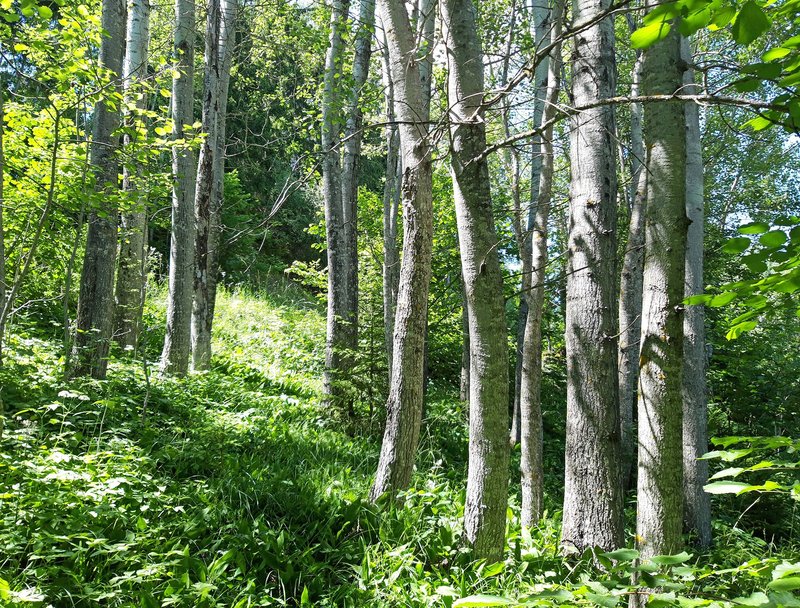
Fig. 2. In the Albula valley in the Canton of Grisons, aspen trees are characteristic elements of the landscape. Photo: Peter Ammann
Aspen is undemanding in terms of soil and climate - something which makes it a tree species of the future in times of climate change. This tree species also thrives on all sites populated by ash, and is thus the ideal replacement tree species for the ash. Given the high costs involved in planting oaks and protecting them from browsing by game, for example, or the high risks and uncertainties involved in introducing non-native tree species, it actually seems obvious to increasingly integrate the aspen - as a native, ecologically stable, uncomplicated tree species available at no cost - in our silviculture.
Aspen and biodiversity
The aspen is one of the most important forage plants for butterflies native to Central Europe.
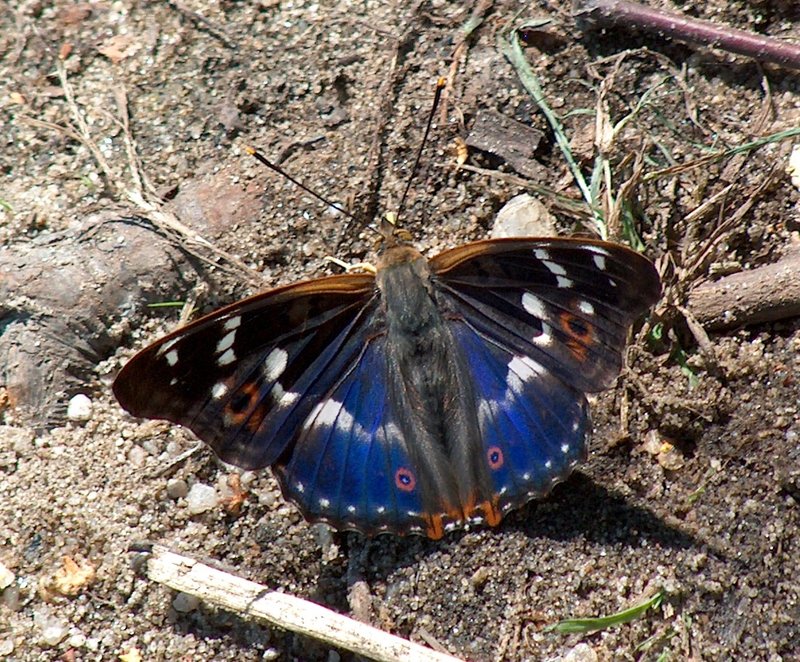
Fig. 3. Lesser purple emperor butterfly (Apatura ilia). Photo: Heiko Blaeser
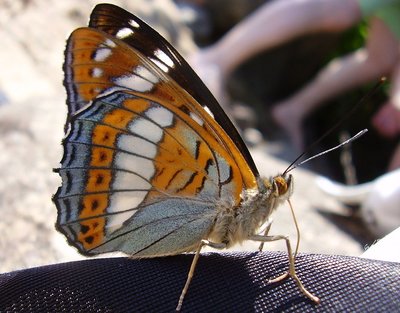
Fig. 4. Poplar admiral (Limenitis populi). Photo: fi:Käyttäjä:kompak
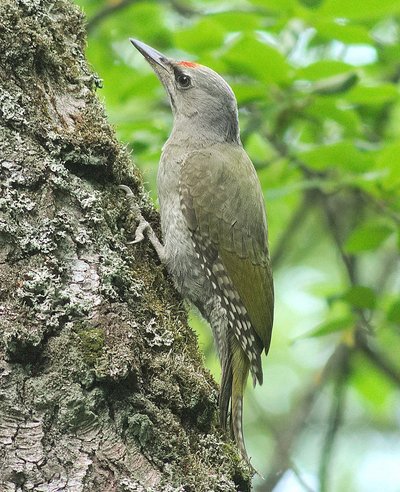
Fig. 5. Grey-headed woodpecker (Picus canus). Photo: Dion Art
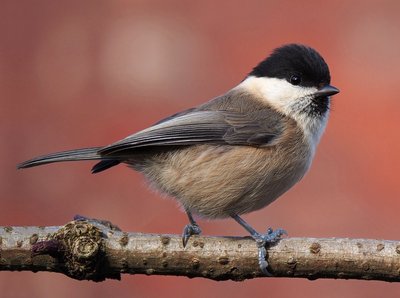
Fig. 6. Willow tit (Poecile montanus). Photo: Francis C. Franklin
The caterpillars of many of the most endangered butterflies live on this tree species, including the lesser purple emperor (Fig. 3) or the poplar admiral (Fig. 4). Indirectly, aspens are also an ideal source of food for birds - such as the grouse, for example - because many herbivorous and wood-dwelling insects are to be found on them. They also increase the structural diversity of mainly coniferous mountain forests.
In areas where beech does not occur for climatic reasons, aspen is the most important “substitute” species for cavity-building woodpeckers such as the rare grey-headed woodpecker (Fig. 5). This is the case in inner alpine regions such as Central Grisons and is also known from southern Scandinavia. As a soft wood tree species of nevertheless considerable dimensions (BHD up to 60 cm even in mountainous areas), the aspen is particularly valuable for cavity building even for “more delicate” birds, such as lesser spotted woodpeckers and willow tits (Fig. 6). Aspen trees over 60 years old in the Albula Valley (Canton Grisons) are often rotten inside, and they almost always have several woodpecker holes. These are mainly near dead main branches. As the core rot progresses, such trees form veritable cavity systems, with living space on several “floors”.
The deadwood of the aspen is particularly valuable, because the tree grows quickly to attain strong dimensions, dies relatively early as a pioneer tree species, and often remains standing because of the limited interest in its wood. Sometimes aspen trees need to be removed, e.g. when they are competing with future final crop tree species or in the course of maintenance measures on agricultural land. In these cases it is advisable to girdle the trees, as this prevents root sprout development and creates valuable standing deadwood.
The aspen in recreational and protection forests
Aspen trees develop beautiful trunks with light-coloured bark. A special feature is the trembling of the leaves even in slight breezes. This is where the expression “shaking like a leaf” comes from. Aspen trees also present a particularly beautiful display of colour in autumn, and are a key feature of the landscape in the Surselva or Albula valleys.
The species’ rapid growth in height and diameter is particularly valuable for the recreational function of the forest: even on extensive areas of disturbance, forest visitors have shade again and the feeling of “being in a forest with real trees” after just a few years.
It is also valuable for stand structure if there are tall, thick-diameter trees there again after only a short time. Rapid diameter growth is also important for the forest’s role as protection against rockfall - especially after disturbances or when the requirements of the “NaiS minimum profile” (Swiss guidelines on minimum tending measures in forests with protection functions) are no longer met. The energy absorption of aspen is presumably somewhat lower than that of other tree species. However, this is probably more than offset by the higher diameter (at the same age).
Under the relatively sparse canopy of aspen, spruce or fir or beech can develop to emerge later. As is the case with rowan or birch, a pioneer crop of aspen of varying density prevents the development of extensive areas or spruce. This leads to the development of stepped height structures among the spruce, making expensive maintenance measures in the protection forest unnecessary.
The aspen can also be useful in preventing shallow landslides. Its roots hold the surface soil in place, creating so-called “root reinforcements” and effectively stabilising slopes. Juvenile aspen first establish a taproot, and later develop strong lateral roots. Their extremely rapid growth could be an advantage here. Calculations determining the reinforcing effect of aspen roots in New Zealand show very good values. In Switzerland, further studies are to be carried out on the aspen to investigate this.
Aspen wood
Colour & structure: Aspen wood is white to yellowish-white throughout. The heartwood (without heartwood colouring) forms late. There may be slight spiral grain in the timber. The growth zones are not clearly demarcated. The longitudinal tangential surfaces are discreetly patterned, the radial ones striped. The overall character of the wood is homogeneous and plain. Aspen wood does not have a noticeable smell. The wood darkens through contact with oxygen. The wood is somewhat heavier than poplar.
Properties:
Compressive strength u12-15: 25–40 N/mm²
Tensile strength u12-15: 69–76 N/mm²
Shear strength u12-15: 6.0–7.5 N/mm²
Hardness (BRINELL) ⊥ to the fibre u12-15: 20-23 N/mm²Uses & processing: The soft aspen wood is easily workable and versatile. It is mainly used for veneer boards, chipboard, OSB and fibreboard, in the paper and pulp industry, for packaging (cases, chipboard baskets and boxes), in the production of matches, and in vehicle construction. It is also processed into rotary veneer for plywood. Solid aspen wood is used for exterior cladding or furniture and interior fittings, in the shoe industry, for prostheses, kitchen and household appliances, special charcoal and in sauna construction.
Its screw and nail-holding strength is acceptable. Gluing with commercially available glues and surface treatment with common agents do not pose any difficulties, although the great absorbing capacity of the wood should be taken into account.
Drying: Shrinkage and swelling values are in the medium range and result in satisfactory to good stability. Both natural and technical drying processes are largely unproblematic. Due to the high initial moisture content, a slow drying process is important. Larger proportions of tension wood can lead to quite severe deformations.
Natural durability (DIN-EN 350-2): Class 5 (not durable); very susceptible to insects
Translation: Tessa Feller

